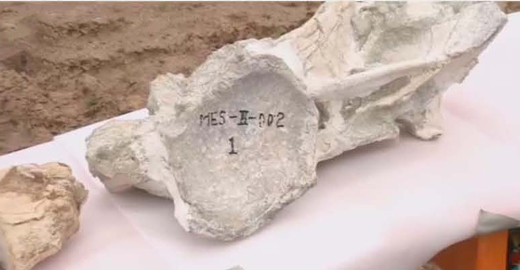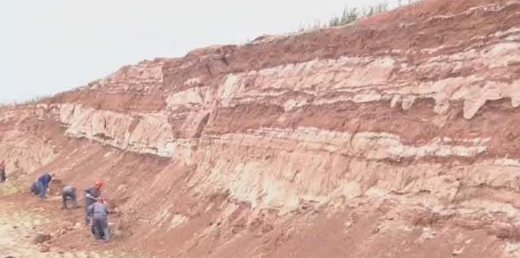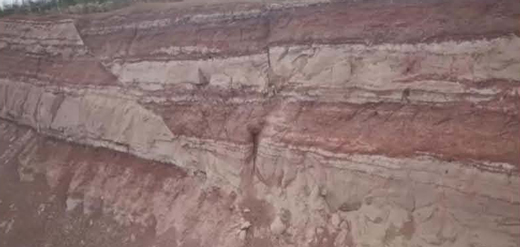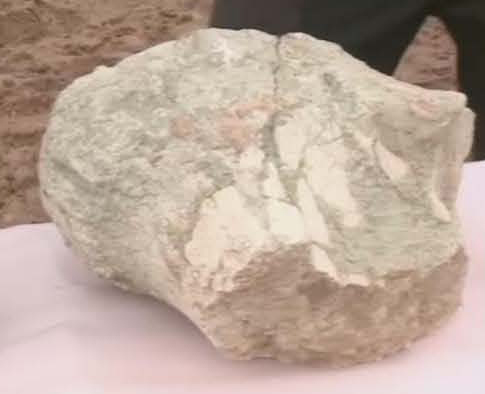Digging It Up in the City
Dinosaur Excavation Work Starts in Yanji City
Palaeontologists at the Chinese Academy of Sciences (CAS), are used to working in all sorts of environments as they strive to excavate the wealth of dinosaur fossils to be found at key locations in China. This week, a field team will be starting work at a new dig site, one with all the conveniences of a modern city, as the excavation work will be taking place in Yanji City, (Jilin Province, north-eastern China), with an approximate population of 400,000 people, the scientists will not be short of company.
Chinese Dinosaur Fossils
Field Team Members Begin Exploring the Cretaceous Strata
Picture credit: Chinese Academy of Sciences
In a press release from the CAS, it is stated that the dinosaur fossil excavation will cover an area of approximately ten square kilometres and this is the first excavation of its kind to be carried out in a modern urban area. Although the strata in the Yanji Basin is known for its substantial plant fossil remains, including flowering plants (angiosperms), this is the first time that dinosaur fossils have been discovered in Yanji City. Experts state that the different coloured bands of strata represent non-marine sediments that were laid down when this area was experiencing climate change.
Zhang Lizhao, a researcher at the Institute of Vertebrate Palaeontology and Palaeoanthropology (IVPP) commented:
“We can see that the geological layers show different colours including red, purplish red and light colours. The geological layer with the colour of purplish red means that, when the layer was formed, the dinosaurs lived in a hot and humid climate. The layers with the light colours were formed during periods with dry and cold weather. We are basically sure that the geologic body here was formed between the late Early Cretaceous and the very early Late Cretaceous.”
Dinosaur Fossil Discoveries
The rocks being explored are around 100 million years of age, they represent sediments laid down between the Albian faunal stage (the last faunal stage of the Lower Cretaceous) and the Cenomanian stage, the first faunal stage of the Upper Cretaceous, a time when global sea levels were extremely high and many terrestrial animal populations were consequently isolated. Dinosaur fossils from the Lower Cretaceous to the Upper Cretaceous transition are relatively rare and these excavations could perhaps provide new information on the evolution of different types of dinosaur especially the Titanosauriformes, Ceratopsia and theropods.
The Very Distinct and Striking Bands of Strata at the Dig Site
Picture credit: Chinese Academy of Sciences
The picture above shows the clearly defined bands of strata. Observers can see a defined fault line in the photograph. Jilin Province is prone to earthquakes and other seismic activity.
A Large Dinosaur Dorsal Vertebra (right) Partial view of Articulated Caudal Vertebrae (left)

Isolated dorsal vertebrae (potential titanosauriform) right with partial view of two articulated caudal vertebrae on the left.
Picture credit: Chinese Academy of Sciences
The picture above shows some of the fossil found, the centrum of the dorsal vertebra has been labelled for identification purposes. Everything Dinosaur team members have identified these bones as from probable titanosauriforms.
Fossil Material Uncovered at the Dig Site
Picture credit: Chinese Academy of Sciences
Six Different Types of Dinosaur
Researchers have commented that at least six different types of dinosaur may have inhabited this part of China around 100 million years ago. They are confident that much more fossil material will be found helping palaeontologists to better understand the biota of this part of the world during a time of climate change.
A spokesperson from Everything Dinosaur commented:
“The fossils found at this extensive site in Yanji City, will add to our knowledge of terrestrial faunas during the Albian to Cenomanian transition. It is likely that a number of new dinosaur species will be identified.”
The Everything Dinosaur website: Everything Dinosaur.




